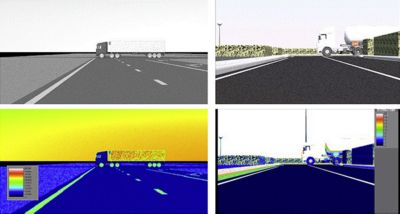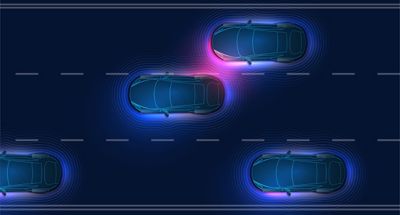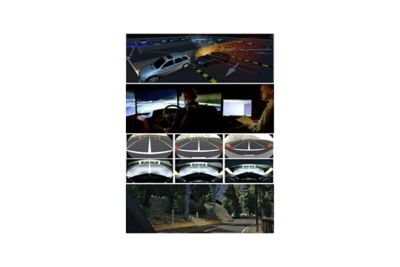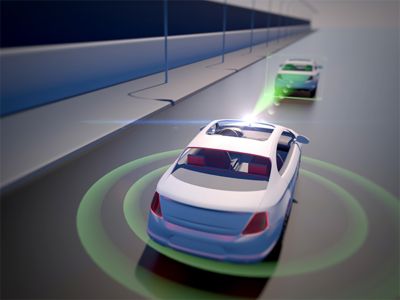-
-
학생용 무료 소프트웨어에 액세스하기
차세대 엔지니어에게 힘을 실어주는 Ansys
학생들은 세계적 수준의 시뮬레이션 소프트웨어를 무료로 이용할 수 있습니다.
-
지금 바로 Ansys에 연결하십시오!
미래를 설계하기
시뮬레이션이 다음 혁신을 어떻게 지원할 수 있는지 알아보려면 Ansys와 연결하십시오.
국가
무료 트라이얼
제품 및 서비스
학습하기
회사 정보
Back
제품 및 서비스
ANSYS BLOG
May 27, 2020
Why Simulation is a Driving Force for Autonomous Vehicles
Autonomous vehicles can improve driver safety and reduce traffic congestion. However, developing this new platform is rife with challenges. Chief among them remains the estimated 8.8 billion miles of road testing that would be required to ensure fully autonomous cars are safe enough to hit the road.
While these challenges are significant, the benefits autonomous vehicles offer, in terms of safety and productivity, could be enormous.
Autonomous vehicles can solve
the safety, traffic and economic
problems we face by eliminating
human error
Each year, roughly 1.25 million people around the world die in traffic accidents, the vast majority of which are the result of human error. In addition to the loss of life, traffic accidents result in an annual economic costs of $277 billion.
Traffic congestion and delays also have high costs. Drivers waste more than 3 billion gallons of fuel because of congestion and spend nearly 7 billion extra hours in their cars. This costs North America roughly $160 billion in 2015.
By eliminating human error, autonomous vehicle technology can solve these safety, economic and congestion problems.
Simulations Cut the Development Time and Cost of Autonomous Vehicles
For automakers and suppliers to take advantage of the emerging opportunity in autonomous vehicles, they must be able to rapidly develop safe and reliable technology.
However, because autonomous vehicles must be trained and tested to respond to all driving situations, they must conduct millions of scenarios. This can be a challenge for even the most experienced of technology leaders.
Simulations make the development
of autonomous vehicles economical
That level of testing and training has extended development cycles. Remember, fully autonomous vehicles will require 8.8 billion miles of road testing. In comparison, Waymo, formerly Google’s self-driving car project, has completed only 20 million miles of physical road tests.
How can this process be accelerated?
Simulation will play a key role. Vehicle designers can use advanced simulation tools to virtually test these scenarios quickly and cost effectively. This not only accelerates development but also reduces the need for physical road tests.
For example, model-based development tools help designers create software for autonomous vehicles that have proven to be far more robust, prone to less errors and safer on the road. These tools can also cut development time in half and shave about 40% off the costs of code validation and verification.
The Benefits of Simulated Road Testing
Because simulation is conducted in a virtual environment, it continues to be faster, less expensive and provides more insights into the underlying physics than physical prototyping.
It remains the only practical way to analyze autonomous vehicles’ performance over the billions of miles of test driving, designed to ensure their safety. As a result, vehicle developers can:
- Accelerate time to market
- Reduce costs
- Improve product quality
Various simulations are needed
to design, test and validate
autonomous vehicles
With simulation, companies can quickly and economically complete the design explorations needed to develop a wide array of technologies that are required for autonomous vehicles (such as lithium-ion batteries and LIDAR systems).
Simulation also solves a number of other challenges associated with autonomous vehicle development. It enables developers to virtually test millions of driving situations in order to validate the vehicle’s high-fidelity sensors, actuators, LIDARs and cameras. Simulation can even drive the development and testing of complex automated driving control software.
Autonomous vehicle development continues to be a challenge of scale — both in terms of large fleets of vehicles and the compute resources required to crunch the data. Test fleets across the globe will generate petabytes of data on a daily basis. This data must be processed, sampled and utilized by multiple teams that work in parallel. Every update or change discovered during this development cycle can trigger additional design iterations. Simulation remains the best method for increasing the scale of development to meet these challenges.
Meeting the Autonomous Vehicle Challenge
The anticipated disruption that autonomous vehicles will create in the traditional automotive market presents a rare opportunity for companies to create a dominant market position.
Therefore, rapid development of these innovative and safe technologies will be critical. Simulation is the only effective and efficient way of addressing the myriad of challenges that companies will face while they develop and test these technologies.
Companies need to use simulations
if they wish to become a market leader
in autonomous vehicle technology
At the recent Big Compute conference, Walt Hearn, regional vice president at Ansys, and Nidhi Chappell, head of product, Azure HPC/AI at Microsoft explained how advanced simulation tools are helping automotive companies overcome their development barriers.



